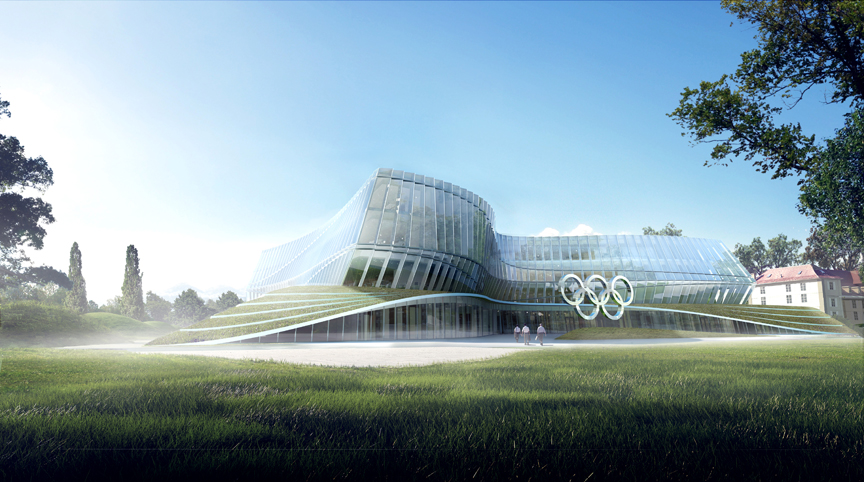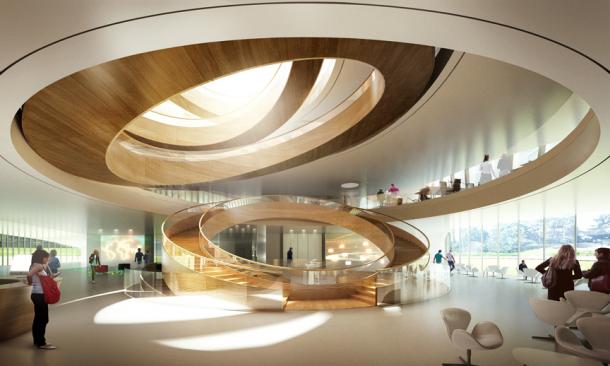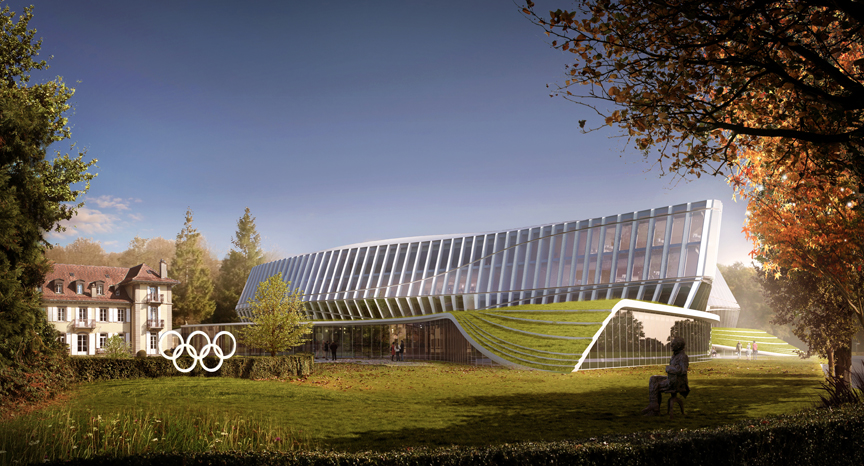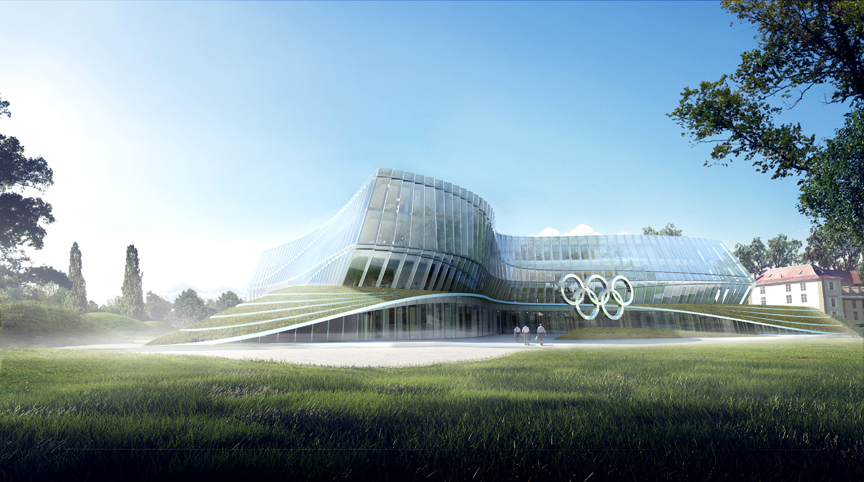The International Olympic Committee (IOC) selected Danish firm 3XN to design its new headquarters after a multi-stage, international architectural competition that concluded earlier this year.
The IOC and 3XN have now released the first renderings of the project, which is located on a 258,333-sf site on the banks of Lake Geneva in Lausanne, Switzerland. The new building will bring together 600 employees currently working in disparate offices throughout the city.
“In recognition of the symbolism of the Olympic Games and needs of the organization, we designed the new IOC headquarters around three key elements: movement, flexibility and sustainability,” said Jan Ammundsen, Senior Partner with 3XN.
“With its dynamic, undulating façade, the building will appear different from all angles and convey the energy of an athlete in motion," added Ammundsen. "Its interior is designed with as few structural constraints as possible. This open and flexible environment will adapt to multiple work styles now and in the future. Our design is also intended to encourage interaction, communication and knowledge sharing among staff.”
3XN’s entire design is built upon respect for the site and sustainable principles. The building features many energy efficient systems, including lake water pumping, photovoltaics, and daylight optimization.
The new headquarters is located within a park on the shores of Lake Geneva and adjacent to historic Château de Vidy, which has been the iconic home of the IOC. 3XN’s design is intended to respect both the château’s legacy and park setting and make as soft a transition as possible from park to building.
Related Stories
| Aug 11, 2010
Great Solutions: Healthcare
11. Operating Room-Integrated MRI will Help Neurosurgeons Get it Right the First Time A major limitation of traditional brain cancer surgery is the lack of scanning capability in the operating room. Neurosurgeons do their best to visually identify and remove the cancerous tissue, but only an MRI scan will confirm if the operation was a complete success or not.
| Aug 11, 2010
Great Solutions: Collaboration
9. HOK Takes Videoconferencing to A New Level with its Advanced Collaboration Rooms To help foster collaboration among its 2,212 employees while cutting travel time, expenses, and carbon emissions traveling between its 24 office locations, HOK is fitting out its major offices with prototype videoconferencing rooms that are like no other in the U.
| Aug 11, 2010
2009 Judging Panel
A Matthew H. Johnson, PE Associate Principal Simpson Gumpertz & HegerWaltham, Mass. B K. Nam Shiu, SE, PEVP Walker Restoration Consultants Elgin, Ill. C David P. Callan, PE, CEM, LEED APSVPEnvironmental Systems DesignChicago D Ken Osmun, PA, DBIA, LEED AP Group President, ConstructionWight & Company Darien, Ill.
| Aug 11, 2010
Inspiring Offices: Office Design That Drives Creativity
Office design has always been linked to productivity—how many workers can be reasonably squeezed into a given space—but why isn’t it more frequently linked to creativity? “In general, I don’t think enough people link the design of space to business outcome,” says Janice Linster, partner with the Minneapolis design firm Studio Hive.
| Aug 11, 2010
BIM school, green school: California's newest high-performance school
Nestled deep in the Napa Valley, the city of American Canyon is one of a number of new communities in Northern California that have experienced tremendous growth in the last five years. Located 42 miles northeast of San Francisco, American Canyon had a population of just over 9,000 in 2000; by 2008, that figure stood at 15,276, with 28% of the population under age 18.










